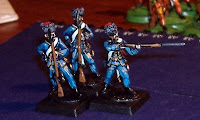What follows is one of my semi-regular exercises where I try to order my thoughts on a topic.
In this case, I have continued my reading on Crusader castles in the Holy Land, necessarily concentrating on the Eleventh and Twelfth Centuries.
When the Crusaders came to the Holy Land they brought more with them than knowledge of timber motte and bailey castles. Stone castles of some complexity were already being built in France, especially in the Anjou and Poitou, and this knowledge was modified by experiencing first hand the walls of Constantinople as they transited the Byzantine Empire.
The earliest crusader castles were basically walled enclosures centering on a substantial tower called a donjon or keep. These enclosures were strengthened by towers at intervals that began as very slight constructions, being little more than buttresses in their earliest form and meanly provided with arrow-slits. As time went on, these towers became more substantial, projecting further forward from the wall to give flanking fire across the face of the curtain. This increasing size allowed the towers to be used as accommodation and storage.
More and more too, as siege engines - especially in the form of the counter-weight trebuchet - became more able to reach out and touch a work, so too were they provided with vaulted shelters to protect the garrison from bombardment. In the earliest period, though, the most successful means of attacking castles was to mine. This meant digging a tunnel beneath a wall or tower, carefully shoring it up as one went along. When complete, the tunnel was stuffed with timber and fired - this would cause the tunnel to collapse, hopefully causing the structures above to come down. The angles of towers were particularly vulnerable to this form of attack; indeed, they were also vulnerable to direct attack by covered engines that would have a good chance of levering individual stones out from the masonry wall. Another disadvantage the square tower suffered was that its flat faces were vulnerable to the smashing impact of missile fire.
Counter to this was the round, polygonal or even prow-shaped tower. The former was the most frequent expression of a defensive philosophy that tried to either deflect missile-fire or resist it directly; a circular tower is effectively made of a series of wedges, any impact upon which would tend to drive the whole structure more firmly together. They were nonetheless more difficult to build, requiring stone masons' work of the highest order and thus square or oblong towers continued to be built until the end of the Crusader period.
As time went on and experience in the siege grew, towers became if anything even more massive and broad, both to more successfully resist the earth-quakes frequently experienced in the region (and one reads frequently of fortifications damages in just these events) and to mount the siege engines that were frequently used to good effect in counter-battery efforts. Also becoming more common in guarding against both earth-quakes and mining efforts was the glacis, a very steeply-sloping ramp built up against the wall and towers. The glacis might also conceal (as would later walls) shooting galleries for shooting out at attackers. The most striking extant example of a glacis may be seen at the Crac des Chevaliers in modern-day Syria.
Crac is also a fine demonstration of a concentric castle. As the attack became more powerful in siege warfare, outer walls were added to the older simpler castles to create an outer yard or bailey overlooked by the towers of the inner ward. The inner towers overlooked the outer to facilitate shooting over them and into them should the outer ward be taken.
Next time: Wall head defenses, defensive locations, the rock-cut fosse and gates.



